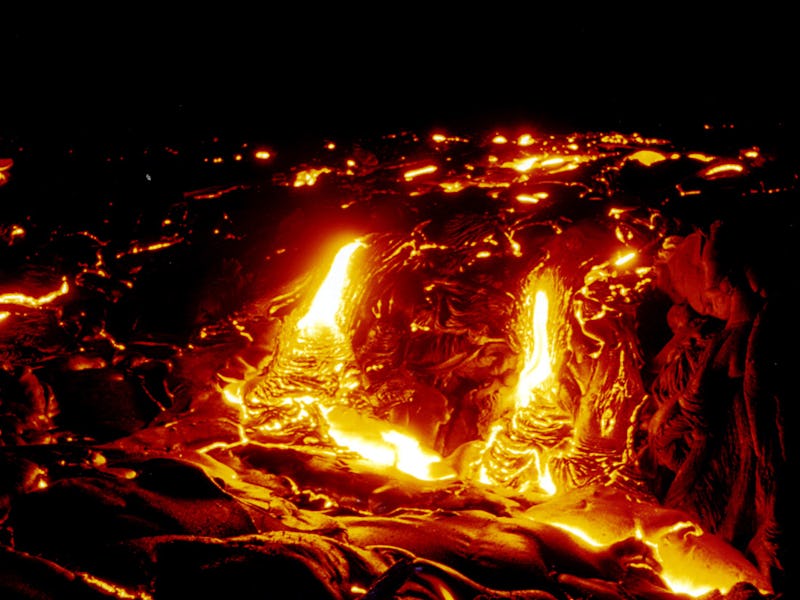Hawaii Volcano Kilauea: What Happens After It Erupts?
Just when we thought it couldn't get worse, it's getting worse.

Since Hawaii’s Kilauea Volcano first erupted on May 3, it has spewed giant rocks the size of refrigerators, opened several dangerous fissures, literally screamed, and then farted copious amounts of toxic sulfur dioxide in the air, creating a rotten-egg smell that could, under some conditions, contribute to acid rain. Now that Kilauea has erupted yet again, the looming question is: What now?
The Kilauea Volcano erupted from its summit on Thursday, sending another dusty plume of ash about 30,000 feet into the sky, the Associated Press reported. The plume — which sits just below the cruising altitude of a jetliner — is expected to cover the surrounding area of the Halemaumau crater on Hawaii’s Big Island.
“At any time, activity may again become more explosive, increasing the intensity of ash production and producing ballistic projectiles near the vent,” the US Geological Survey said on its website. “Ballistic projectiles may be produced should steam-driven explosions occur. Impacts will be limited to an area around Halemaumau.”
Ash from volcanoes like Kilauea can have lasting effects on air and water quality, not to mention on the livelihoods of those living in the surrounding area. Volcanic ash has been known to collapse roofs, coat highways, ground airplanes, and put people at risk of developing respiratory issues.
Another immediate effect of a volcanic eruption is its destruction of plant and wildlife. Lava flows, pyroclastic flows, and Kilauea’s release of toxic sulfur dioxide can contribute to the famine and eventual loss of livestock and other animals.
While scientists are still collecting data on how wildlife has been affected, looking at the damage from previous volcanic eruptions offers a grim example of what’s possible. In the case of Mount St. Helen’s eruption in 1980, the Washington Department of Game estimated that 11,000 hares, 6,000 deer, 5,200 elk, 1,400 coyotes, 300 bobcats, 200 black bears, and 15 mountain lions died from the rock-spewing pyroclastic flows from the eruption. Given that Kilauea sits on a relatively small island, it has the opportunity to redirect an entire ecosystem.
And then, of course, are a volcanic eruption’s long-term effects on climate change. Kilauea’s eruption is already spewing hydrogen chloride, sulfur dioxide, ash, and other materials high into the stratosphere. Not only can the carbon dioxide that Kilauea is releasing augment the effects of climate change, but the eruption may also cause chemical reactions that produce chlorine monoxide, a substance that destroys the Earth’s ozone layer.
After Kilauea’s eruption on Thursday, lava continued to flow from multiple points along the northeast end of the active fissures. Residents are already dealing with its damaging effects, and due to the elevated sulfur dioxide levels, the County of Hawaii has closed schools in the area and warned that wind may carry the latest ash plume as far north as Kau, Kea’au, and Hilo.
Despite two weeks of destruction, Kilauea’s explosive eruption on Thursday suggests that it doesn’t plan to slow down. Local and federal partners say they will continue to monitor the situation for its latest effects on the local environment.